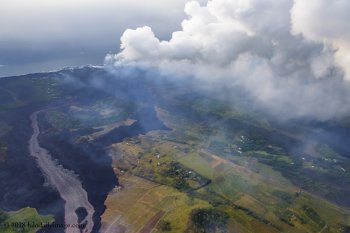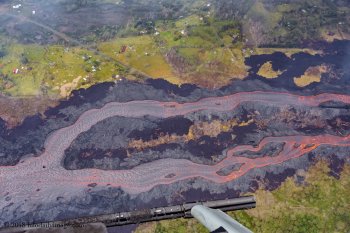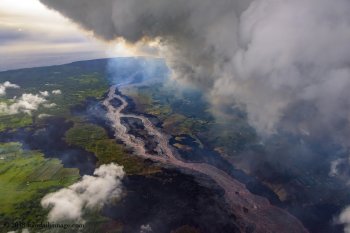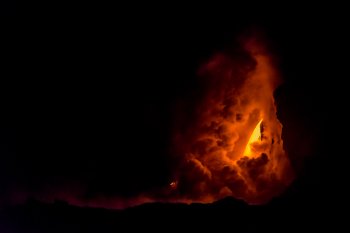[Apologies AK, just about to post this for Tigger 11,when your piece appeared .... but yes, I agree with your comments, hope some of the below reinforces my case]:
Thanks for taking the time to respond, Tigger 11,and referencing Hadley Rille research data relevant to your argument.
Studying this throws up a few question. You assert most scientists have made up their minds how Rilles are formed after the 1971 Apollo mission and sample analysis, but in the latest update on Rilles on Wikipedia:
https://en.m.wikipedia.org/wiki/Rille.
..... under the last picture on the right it says: “Hadley Rille is a sinuous rille for which NASA says that they don't have a (final and definite) conclusion on how it formed .... and this is a rille they have visited and sampled, so thought it not out of order to upset the ‘status quo’ opinion!
It continues in the Link: “The origin of lunar sinuous rilles remains controversial. Among the alternatives proposed are lava channels and lava tubes, but fracture control is decidedly apparent in some places. Some sort of fluid erosion, however, seems necessary to account for the configurations of many rilles with exactly parallel walls from which material has been removed; lava may be the most plausible agent for erosion inasmuch as no evidence of water exists in the lunar samples. The diversity among rilles suggests that several genetic hypotheses may be required to explain all of them”.-C.A.H.
So now we know significant water exists, surely this liquid hypothesis can be reawakened?
The Article defines a ‘Sinuous Rille’ as:
“Sinuous rilles meander in a curved path like a mature river, and are commonly thought to be the remains of collapsed
lava tubes or extinct
lava flows. They usually begin at an extinct
volcano, then meander and sometimes split as they are followed across the surface”.
Maybe scientific theory on Rille formation, especially on the Moon, needs urgent revision. Key points I would like to make are:
1)There is no lava debris ‘downstream’ from ALL these smooth lunar rille erosions.
2)The theory that ALL these many Lunar lava tubes/rilles collapsed uniformly along their whole length, and not in broken segments, seems pretty preposterous!

3)To suggest the Inner Cut erosion in my ‘canyon’ example, is a second smaller lava tube also evenly collapsed over it’s length on top of the other ..... is surely scientific theory on LSD?!

4)Many lunar rilles don’t originate ‘downstream’ of an extinct volcano.
5)Our pock marked moon shows clearly Lunar erosion mechanisms are severely limited by it’s ‘atmospheric’ history, surely it is more likely these channels are cut by long term water erosion from possible subterranean ‘weeping’, with the flow cutting smooth channels through loose ‘pariculate’ debris before evapouration occured ....
6)There is NO evidence erosion mechanisms on the Moon have subsequently removed the lava debris of scientists ‘imagination’ that might have collected ‘downstream’ after exceptionally smooth rille formation!
Isn’t it time for Scientists to get over their mental block on this? Logic suggests I am 90% sure these were cut by liquid that then evaporated.
Evidence of water and it’s erosion features are being found in the history of many planetary bodies/moons of our Solar System ....
Many lunar asteroid/meteorite strikes plus subsurface volcanisation mechanisms could disturb subterranean water reservoirs (whose presence was confirmed by NASA/Indian research experiments) to create ‘springs’ on the moon and smoothly carve these very localised uniquely interesting features.
INTERESTING FOOTNOTE:
Just discovered Dubdroid’s ‘canyon’ has a name:
https://en.m.wikipedia.org/wiki/Schroter's_Valley
Sorry Dubs, no 5 mins of ‘fame’!

At the bottom of this page is an interesting comment which says “The Schroter Valley has been the subject of
numerous Transient Lunar Phenomenon observations”! (Haven’t had time to dig out the details as to what form they took, maybe some reader will know?)
https://en.m.wikipedia.org/wiki/Transient_lunar_phenomenon
Several options are listed.
It could be good evidence for the Dubdrifter/Dubdroid Schroter Valley Rille Creation/Water Erosion Theory (DDSVRCWET)

......
If the observations turn out to be periodic emissions of spring water creating cloud-like photo polarising effects and slight gaseous luminescence visible from Earth, then this area is probably still very active periodically, as the Inner cut erosion suggests ..... and more importantly, has probably been ‘weeping’ for millions of years.

..... surely this evidence now immediately bumps this location into the No.1 spot for Earth Civilisation’s first Lunar Base! Exciting times ahead, eh?!
Astronauts should start packing their divining rods and lightweight water drilling rigs .... long term Lunar colonisation is now set to ‘All Systems Go!’






